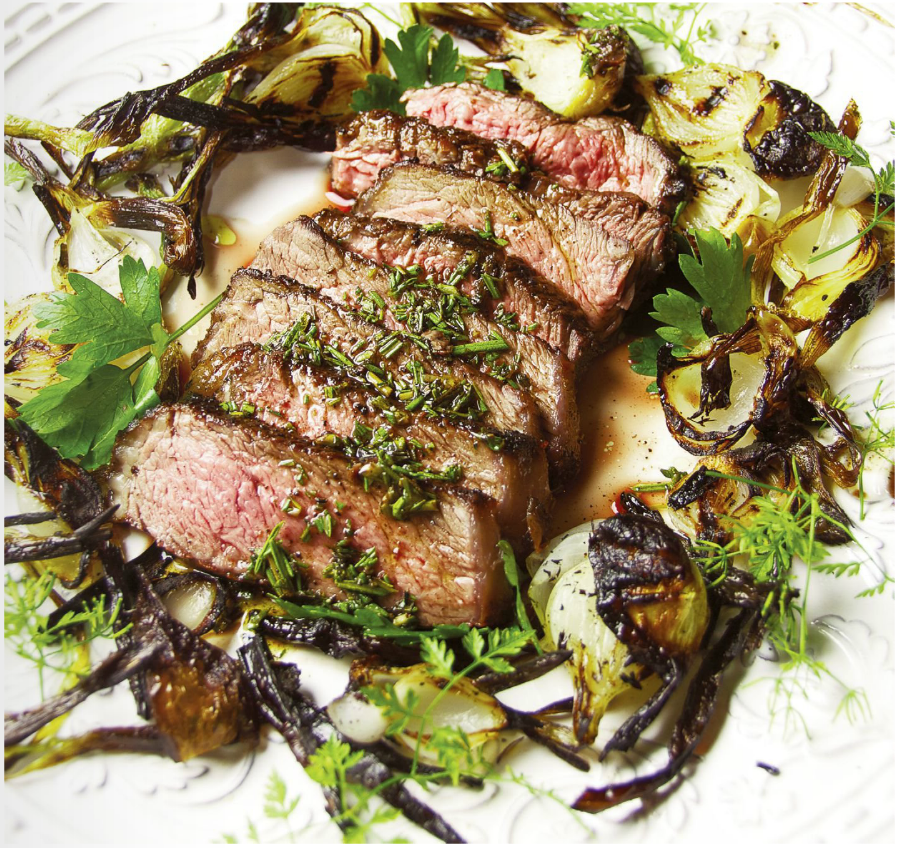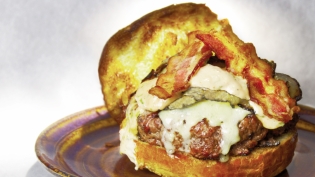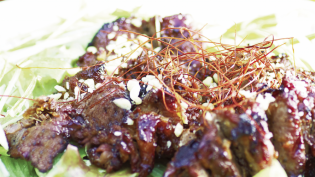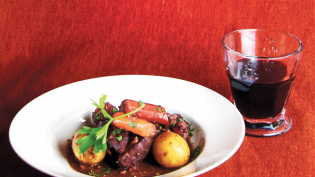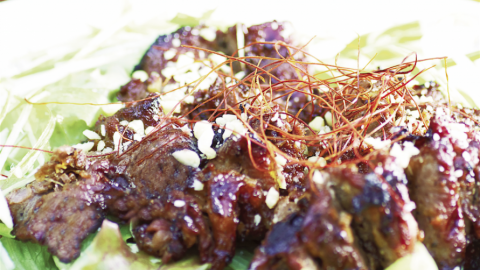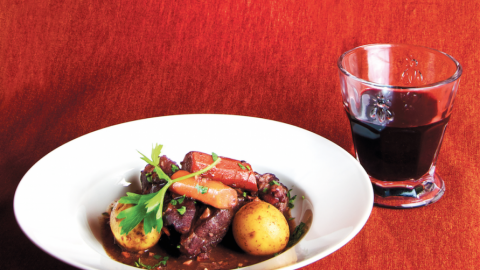Grass-finished Beef
Grass-finished beef. It’s the new buzz and you seriously need it now. Don’t settle for grass-fed if you see this term bandied about. It doesn’t mean anything. Most cows are grass-fed but then grain-finished to fatten them up for sale. You want pasture-raised, grass-finished beef. Raised without hormones, antibiotics or growth enhancers, this is not your average beef. These happy cows never see anything but pasture their entire lives and they are hand-tended from start to finish. Is this better for the animal? Most definitely, yes. Is the meat superior for human consumption and health? No question.
Here’s why. Grass-finished beef is high in conjugated linoleic acid (CLA) which is a fatty acid found to be extremely beneficial for health, and is widely thought to reduce the risk of cancer, cardiovascular disease, high blood pressure, high cholesterol and overall body fat. Grass-finished beef is one of the richest known sources of CLA on the planet, and it’s up to five times higher than grain-finished beef, which is pretty monumental.
Grass-finished animals can have as little as one-third as much fat as a similar cut from a grain-finished animal. Consequently, grass-finished beef is lower in both calories and saturated fat, which means the meat is inherently leaner. If you’re going to consume pasture-raised, grass-finished beef, choose cuts with the highest fat marbling so you can obtain all of the healthy CLA and Omega-3 your body needs.
Omega-3 is another fatty acid that is vital for health and often lacking in the standard American diet. Omega-3 levels are much higher in grass-finished beef which makes sense given that Omega-3 is formed in the chloroplasts of green leaves (and algae), and that’s all grass-finished cows graze upon during their lives. Cows that are raised on pasture but then sent to a feedlot to munch on grain and fatten up for sale see a decline in Omega-3 levels every single day they are fed grain.
When I first read about the benefits of grass-finished beef I went to every store I frequented on the Cape to see if it could be special-ordered. This turned out to be quite a challenge, seeing that not a single person I encountered in various meat markets had a clue. Consequently, I had no choice but to make the journey to Whole Foods in Hingham, which does carry it, but not on a consistent basis (and I thought a left turn in the summer on the Cape was challenging; have you ever been to Exit 15 in Hingham?!?). Ugggh. I needed a local source.
One day I found myself in Chatham Village Market. A very nice gentleman asked me if I needed help during the summer rush of tourists. On a burned-out whim I asked if they could obtain grass-finished beef, and lo and behold I had accidentally stumbled upon a very savvy meat manager. A meat manager who knew his business and rapidly listed the enormous health benefits of grass-finished beef without my even asking. This meat manager’s name is James. Ask for him. Chatham Village Market not only carries grass-finished (and freshly ground on site) beef from Hardwick Beef in Vermont, they are willing to special order any cut of grass-finished beef you want with a week or more of notice.
We requested several two-inch-thick hunks of ribeye. We were overjoyed when we saw these sexy slabs, which you can see in the photo with James. Chatham Village Market is an excellent local source for grass-finished beef year round.
Seawind Meadows in Dennis is one local source of grass-finished beef. Their Highland cattle are grass-fed their entire three years before they are processed. Laura McDowell-May sells their meat at the Harwich Farmers’ Market and from their home. Another source is John Crow Farm, which is based in Groton, Massachusetts, and appears at farmers’ markets across the Cape in season. We met Doug, the John Crow Farm rep at the Chatham Farmers’ Market. We purchased a gorgeous ribeye steak, ground beef and a flank steak, all pasture-raised and grass-finished.
We went home after the Chatham Farmers’ Market and cooked the massive ribeye steak on the Big Green Egg, marinating it as it cooked with a homemade herb brush from the garden (marjoram, thyme and rosemary attached to the end of a spoon with twine) and grass-fed melted butter, and served it with fresh herbs and artisanal olive oil from a celebrated winery in Sicily that we sell in our boutique wine and spirits store. Kevin and I both thought it was the best steak we’ve ever had.
You may be wondering if pasture-raised, grass-finished beef is more expensive. Yes. So what? As with most things in life, you get what you pay for and I am willing to foot the extra cost so the animals are treated well and the meat contributes to my health rather than taking away from it. Given that I’m on the wrong side of 40, but the right side of 50, I feel like I’m at the optimal mental and physical performance of my life. In the early autumn of my years, I’ll take that. Happily.


